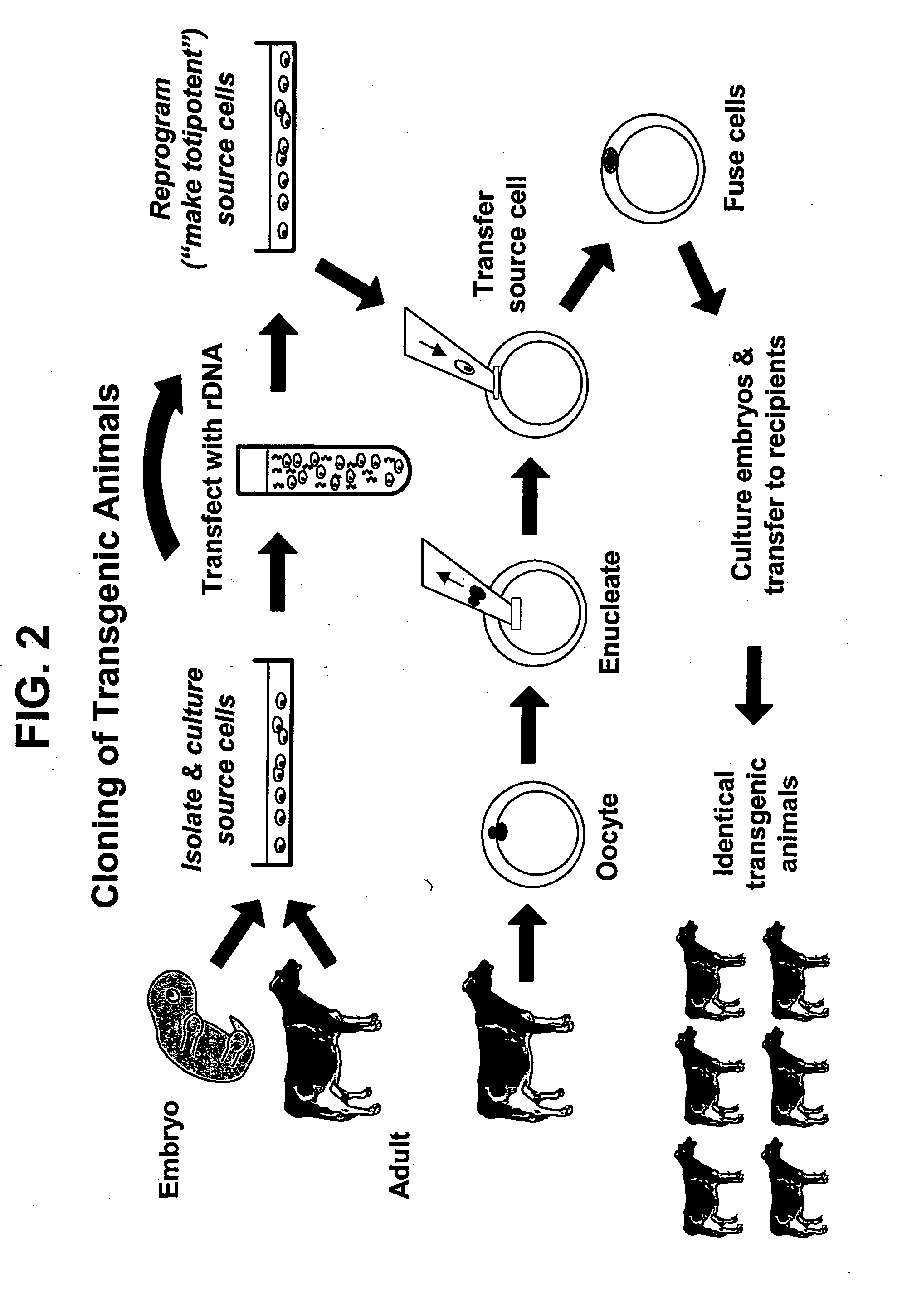Method for the rapid selection of homozygous primary cell lines for the production of transgenic animals by somatic cell nuclear transfer
a somatic cell and primary cell technology, applied in the field of somatic cell nuclear transfer and the rapid selection of primary cell lines for can solve the problems of inefficiency, time-consuming, costly and unreliable development, and the inability of specific animal lines to produce gene products, so as to facilitate and accelerate the production of transgenic animals, increase the yield of a desired protein, and optimize the effect of production
- Summary
- Abstract
- Description
- Claims
- Application Information
AI Technical Summary
Benefits of technology
Problems solved by technology
Method used
Image
Examples
example 1
[0047] Protocol Using G418 Selection:
[0048] I. Plate primary cells at 2×105 / 10 cm petri dish.
[0049] II. Set up 2 petris for every concentration of G418. Optimum concentrations of G418 will vary from cell line to cell line, example: [0050] 1.2″[0051] 1.5″[0052] 2.0″[0053] 2.5″[0054] 3.0″
[0055] Add the drug at the same time you plate the cells. No need to let the cells settle down first.
[0056] III. Feed plates daily for the next five days with fresh medium+drug. After ˜5 days most of the cells will be dead, so feeding can be dropped back to every other day or so.
[0057] IV. Pick 6-24 of the best looking clones from the highest concentration of G418 onto 24-well wells.
[0058] V. Freeze and expand for DNA and karyotyping. Immobilize cells on filters for interphase FISH.
[0059] In another embodiment of the current invention, following the initial transfection, and isolation of the cell line, the cells be subjected immediately to increased selection to generate the homozygous cell line...
PUM
| Property | Measurement | Unit |
|---|---|---|
| concentration | aaaaa | aaaaa |
| concentration | aaaaa | aaaaa |
| genetic composition | aaaaa | aaaaa |
Abstract
Description
Claims
Application Information
 Login to View More
Login to View More - R&D
- Intellectual Property
- Life Sciences
- Materials
- Tech Scout
- Unparalleled Data Quality
- Higher Quality Content
- 60% Fewer Hallucinations
Browse by: Latest US Patents, China's latest patents, Technical Efficacy Thesaurus, Application Domain, Technology Topic, Popular Technical Reports.
© 2025 PatSnap. All rights reserved.Legal|Privacy policy|Modern Slavery Act Transparency Statement|Sitemap|About US| Contact US: help@patsnap.com


